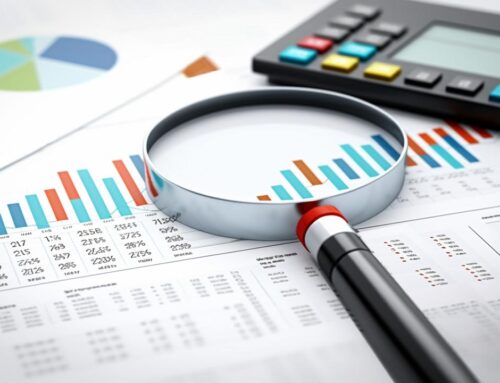The ability to predict future trends, outcomes, and market behavior provides companies with a huge competitive edge. This edge often comes in the form of predictive business analysis, a method that leans heavily on the systematic collection, organization, and analysis of relevant data. By understanding this process and its importance, businesses can be better equipped to make informed decisions, anticipate challenges, and seize opportunities. In this article, you’ll journey through the intricacies of data collection for predictive business analysis, discover its pivotal role in forecasting, and realize the potential it holds for the business realm. By the end, you’ll not only comprehend the significance of data-driven insights but will also have a clear roadmap for implementing them in your business endeavors.
Collecting Data for Predictive Business Analysis
Table of Contents
- Why Collect Data for Predictive Business Analysis?
- Methods of Data Collection
- Challenges in Data Collection
- Harnessing the Power of Data: Real-World Applications
- Frequently Asked Questions
- Final Thoughts
- Sources
Why Collect Data for Predictive Business Analysis?
The capability to anticipate market shifts, customer preferences, and potential risks. It’s a requisite for modern businesses aiming for growth, efficiency, and market leadership.
- Evidence-Based Decisions: Gone are the days when business decisions were made on mere intuition or gut feelings. In this age of information, organizations must be data-driven. By collecting and analyzing historical data, businesses can discern patterns, deduce relationships, and make more informed decisions. These decisions, based on concrete evidence, significantly reduce the margin of error, ensuring that strategies are both relevant and effective.
- Risk Management: Every business, irrespective of its scale or domain, faces risks. These could range from operational to market-based, from financial to reputational. Predictive analytics, powered by meticulously collected data, can flag potential risks well in advance. This foresight enables companies to take proactive measures, either to mitigate these risks or to devise contingency plans, ensuring continuity and resilience.
- Competitive Advantage: In a saturated market, differentiation is key. Companies equipped with predictive insights can anticipate market changes, evolving customer preferences, and even competitors’ moves. Such prescience allows them to innovate, pivot, or strategize faster than others, ensuring they remain not just relevant but also leaders in their domain.
- Resource Optimization: Data-driven predictive insights help organizations allocate their resources more efficiently. Whether it’s capital allocation for an upcoming project, human resources distribution, or even inventory management, predictive analytics can forecast demand and help businesses optimize their operations for maximum efficiency and ROI.
- Enhancing Customer Experiences: By understanding past customer behaviors and preferences, businesses can predict what a customer might want in the future. This leads to tailored experiences, personalized offerings, and proactive customer service – all culminating in enhanced customer loyalty and brand advocacy.
- Innovation Driving: Data can reveal gaps in the market, unmet customer needs, or inefficiencies in current offerings. Businesses that harness these insights can drive innovation, developing products, services, or solutions that cater to these identified gaps, ensuring they stay ahead of the curve and meet emerging market demands.
Methods of Data Collection
Using various data collection methods ensures a comprehensive understanding of different facets of business operations, market dynamics, and customer preferences. Here’s an expanded exploration of the techniques to gather data:
- Surveys:
- Description: These are questionnaires distributed to a specific audience to glean insights on their perceptions, opinions, behaviors, or experiences.
- Application: Surveys can be tailored to understand market needs, measure customer satisfaction, or get feedback on a new product. With digital tools like SurveyMonkey and Google Forms, deploying and analyzing surveys has become more efficient.
- Web Analytics:
- Description: Web analytics tools track and report website traffic, offering insights into user behaviors, preferences, and engagement levels.
- Application: Tools like Google Analytics, SEMrush, and Mixpanel provide details on bounce rates, page views, conversion rates, and user demographics. This data is crucial for refining digital strategies, optimizing web pages, and improving user experience.
- Social Media Scrapping:
- Description: This involves collecting data from social media platforms to understand audience behaviors, sentiments, and emerging trends.
- Application: With platforms like Brandwatch and Talkwalker, businesses can monitor brand mentions, track sentiments, identify influencers, and discern trending topics, aiding in reputation management and content strategy development.
- Transactional Data:
- Description: This comprises data from sales, invoices, customer purchase histories, and other financial transactions.
- Application: Analyzing transactional data can offer insights into buying patterns, seasonality effects, and customer loyalty. It’s instrumental for inventory management, sales forecasting, and financial planning.
- Observational Methods:
- Description: This method involves directly observing and recording behaviors and events in their natural settings without direct interaction with the participants.
- Application: It’s particularly useful in retail settings where observing customer behaviors can provide insights into store layouts, product placements, and purchasing decisions.
- Interviews:
- Description: One-on-one conversations where participants are asked specific questions, and their responses are recorded for analysis.
- Application: Interviews can provide in-depth insights into user experiences, challenges faced by clients, or feedback on a particular product or service.
- Focus Groups:
- Description: A form of qualitative research where a group of people is asked about their perceptions, opinions, beliefs, and attitudes towards a product, service, or concept.
- Application: Businesses use focus groups to test new products, gauge reactions to advertising campaigns, or understand customer pain points.
- External Databases and Syndicated Research:
- Description: Purchasing data or research reports from third-party organizations that specialize in collecting and analyzing data.
- Application: Useful when businesses need industry-specific insights, competitor benchmarking, or market trends without conducting primary research themselves.
The method chosen often depends on the research objective, available resources, and the nature of the data required. A combination of multiple methods often yields the most holistic and actionable insights.

Challenges in Data Collection
Data collection is paramount but it’s not without its hurdles. Identifying and addressing these challenges beforehand ensures the quality and reliability of the collected data. Let’s take a look at some of the predominant challenges faced by businesses:
- Data Quality:
- Description: Ensuring the accuracy, completeness, and relevance of the data is often challenging. Inaccurate or outdated data can skew analyses and lead to misguided decisions.
- Impact: Decisions made on poor-quality data can be detrimental to business operations, reputation, and profitability.
- Data Security:
- Description: With increasing cyber threats, ensuring the protection of collected data, especially sensitive information, becomes paramount.
- Impact: Data breaches can lead to financial losses, legal repercussions, and significant damage to a company’s reputation.
- Volume vs. Value:
- Description: In the era of Big Data, businesses often collect vast amounts of data, but not all of it is useful or relevant.
- Impact: Sifting through excessive data can strain resources, and if not done correctly, crucial insights might be overlooked.
- Data Integration:
- Description: Data often comes from various sources and in different formats. Integrating this disparate data into a cohesive and usable format is challenging.
- Impact: Without proper integration, comprehensive analysis becomes difficult, and insights can be siloed or incomplete.
- Ethical Considerations:
- Description: Ensuring that data is collected ethically, respecting privacy norms, and obtaining necessary permissions is a concern.
- Impact: Unethical data collection can lead to legal complications, loss of consumer trust, and brand damage.
- Temporal Relevance:
- Description: Data, especially in dynamic industries, can become obsolete quickly. Ensuring the temporal relevance of collected data is a challenge.
- Impact: Decisions based on outdated data can be misaligned with current market conditions and consumer preferences.
- Cost Implications:
- Description: Comprehensive data collection, especially using advanced tools or third-party services, can be expensive.
- Impact: High costs might strain budgets and affect the ROI of data-driven initiatives.
- Bias and Subjectivity:
- Description: Avoiding biases, whether from the source of data or the data collection process itself, is crucial to ensure impartiality.
- Impact: Biased data can lead to skewed analysis, perpetuating stereotypes or misrepresenting actual scenarios.
- Legal and Regulatory Challenges:
- Description: With regulations like GDPR and CCPA, businesses need to be aware of the legal landscape around data collection and processing.
- Impact: Non-compliance can result in hefty fines, legal actions, and damage to corporate reputation.
Addressing these challenges requires a blend of technological solutions, stringent processes, continuous monitoring, and a proactive approach to data ethics and security.
Harnessing the Power of Data: Real-World Applications
The real testament to the importance of data collection for predictive business analysis is in its real-world applications. Here’s an in-depth look at some compelling real-world applications:
- Retail:
- Personalized Marketing Campaigns:
- Description: By analyzing customer purchase history, browsing behavior, and feedback, retailers can create personalized marketing campaigns tailored to individual preferences.
- Impact: Businesses like Amazon and Netflix have seen increased customer engagement and sales by offering personalized product recommendations and content.
- Inventory Management:
- Description: Predictive analytics helps in forecasting demand for specific products, aiding in optimal stock maintenance.
- Impact: Walmart, leveraging advanced data analytics, has minimized stockouts and overstock scenarios, ensuring product availability and reducing inventory costs.
- Personalized Marketing Campaigns:
- Banking and Finance:
- Credit Risk Analysis:
- Description: Banks use predictive models to assess the probability of loan defaults based on customer’s financial history and current economic factors.
- Impact: By identifying high-risk clients, banks can reduce financial losses and maintain a healthy lending portfolio.
- Fraud Detection:
- Description: Advanced algorithms analyze transaction patterns to detect anomalous activities, indicating potential fraud.
- Impact: Major banks worldwide have significantly reduced fraudulent activities, saving millions and ensuring customer trust.
- Credit Risk Analysis:
- Healthcare:
- Patient Admission Predictions:
- Description: By analyzing factors like seasonal diseases, local events, and historical admission rates, hospitals can predict patient inflow.
- Impact: Hospitals can allocate resources, staff, and equipment more effectively, ensuring timely care and operational efficiency.
- Drug Development:
- Description: Predictive analytics accelerates the drug development process by predicting potential success based on preclinical and clinical data.
- Impact: Pharmaceutical giants, such as Roche and Pfizer, have optimized their R&D processes, reducing costs and speeding up drug launches.
- Patient Admission Predictions:
- Agriculture:
- Crop Yield Prediction:
- Description: By analyzing weather patterns, soil quality, and historical yield data, farmers can predict crop outputs.
- Impact: Precision farming, adopted by progressive farmers globally, has led to increased yields, reduced resource wastage, and optimized farming operations.
- Disease and Pest Prediction:
- Description: Predictive models can forecast potential disease or pest attacks based on environmental conditions and historical data.
- Impact: Early interventions reduce crop losses and ensure food security in many regions.
- Crop Yield Prediction:
- Transportation:
- Route Optimization:
- Description: Data-driven algorithms analyze traffic patterns, weather conditions, and historical data to suggest optimal routes.
- Impact: Companies like UPS and DHL have optimized their delivery routes, saving time, fuel, and improving service efficiency.
- Route Optimization:
Across the spectrum, the message is clear: data, when collected diligently and carefully analyzed, has the power to transform industries, optimize operations, and create unparalleled value. The potential is vast; the key lies in harnessing it effectively.
Frequently Asked Questions
Final Thoughts
The power of predictive business analysis lies in its ability to shape the future by understanding the past. While challenges exist, the rewards of well-executed predictive analysis— from improved decision-making to increased profitability— are immense. The key lies in collecting quality data, analyzing it with precision, and leveraging insights to drive actionable strategies.
Sources
- Smith, J. (2021). Predictive Analysis in Modern Business. Business Weekly.
- Peterson, A. (2022). The Role of Data in Business Forecasting. Journal of Business Strategy.
- Google Analytics









Leave A Comment